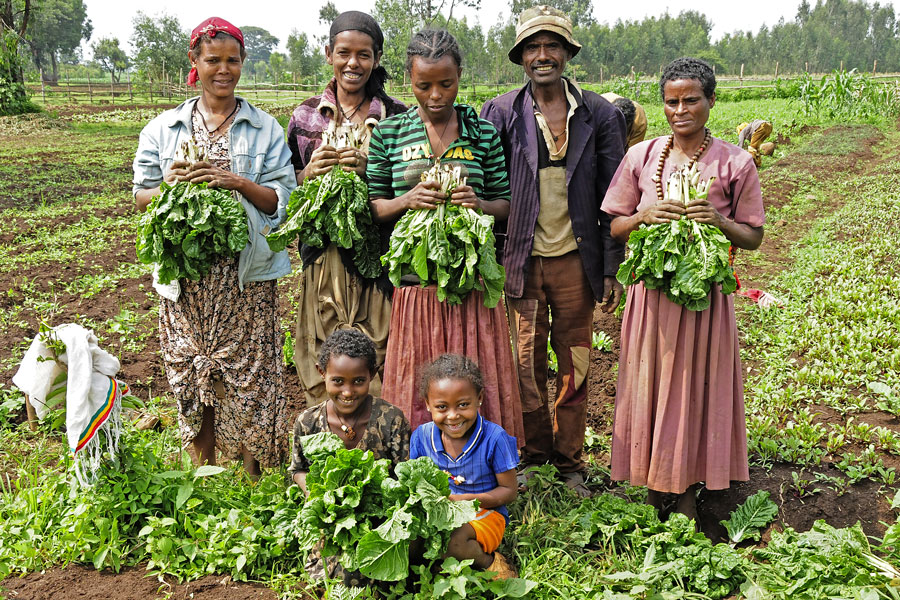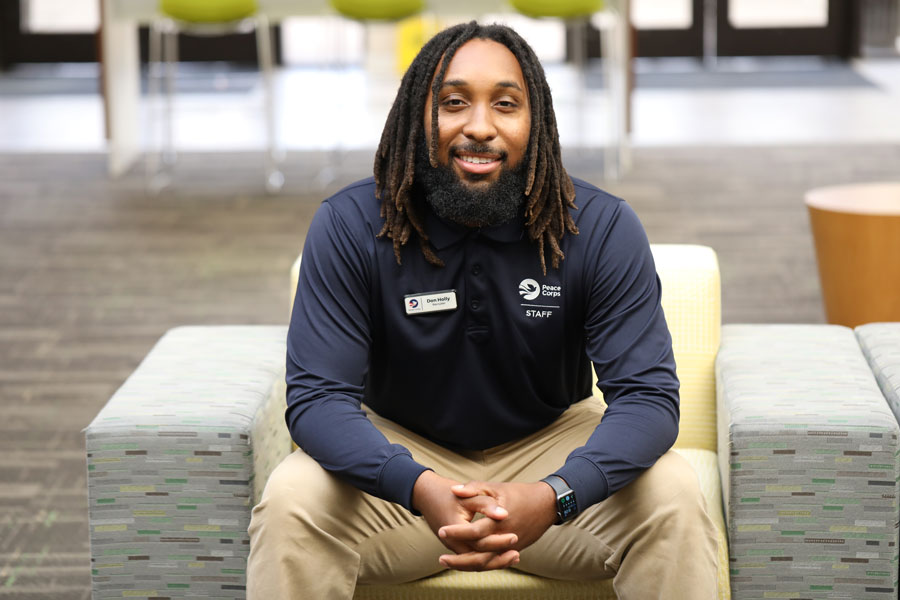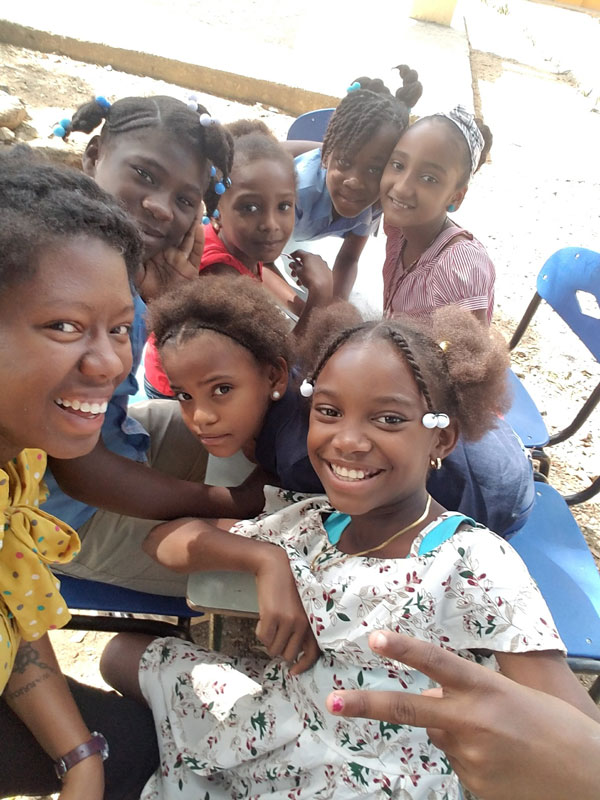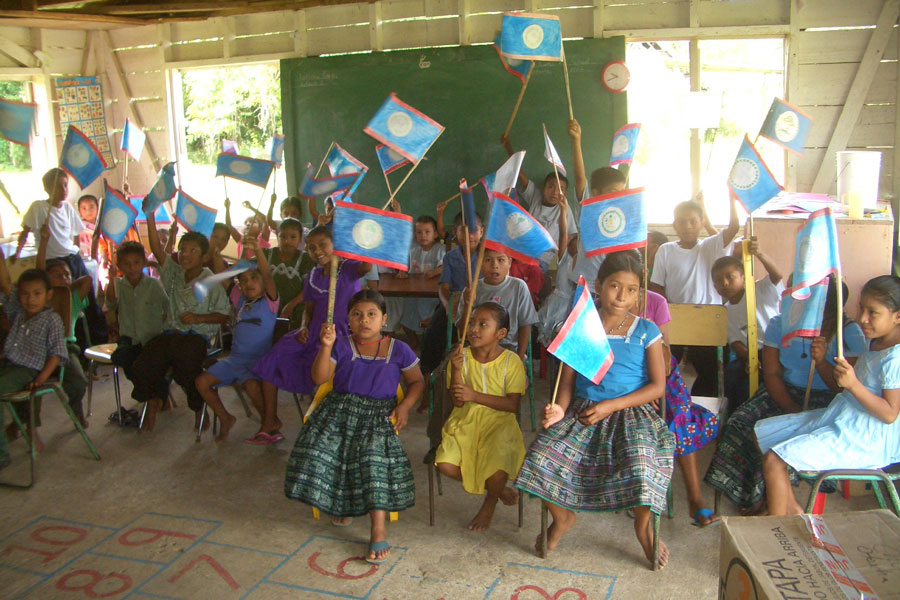Called to Serve
Alumni live out Baylor's mission through the Peace Corps
Few things are more essential to Baylor’s identity than service. The University’s mission “to educate men and women for worldwide leadership and service” says as much.
In February 2020, Peace Corps announced its 2020* Top Colleges, recognizing the colleges and universities that produced the most volunteers in 2019-20. Baylor ranked in the top 25 volunteer-producing institutions among medium-sized universities and colleges (5,000-15,000 undergraduate enrollment), landing at No. 21.
More than 200 Baylor alumni have served abroad as Peace Corps volunteers since the agency’s 1961 founding, including 17 who were in the field when the 2020 rankings were announced. The Peace Corps is one of several organizations through which Baylor students, alumni, faculty and staff serve globally.
Matthew Whelan, Ph.D., is assistant professor of moral theology in the Honors Program at Baylor. He served two years with the Peace Corps’ Family Hillside Farming Project in the Francisco Morazán Department in central Honduras after graduating summa cum laude with a Bachelor of Arts in religion and English from the University of Virginia in 2000.
“We worked with farmers who are trying to make a living on the hillsides of Honduras,” Whelan says. “Farming hillside land is hard because — among other reasons — when you plow the land, it erodes. Most of my work had to do with soil conservation techniques and alternative fertilizers for farmers who live in remote areas far from markets.”
Whelan regularly shares his experience with students in his classes and encourages them to consider serving with the Peace Corps after graduating. In April, he was a featured speaker at a Peace Corps recruiting event at Baylor organized by Erin Lynes, a senior environmental science major with minors in Spanish and business. Whelan believes Baylor students are ideal candidates for Peace Corps service.
“Through my Baylor experience, I've realized that it is possible to help people as a career and something I can pursue through the Peace Corps.”–Erin Lynes, senior
“Baylor is globally oriented, mission oriented, and our students have a desire to serve others,” Whelan says. “Peace Corps is a natural outlet for that.”
One of the best aspects of the Peace Corps, according to Whelan, is the training and in-field support volunteers receive.
“I was choosing between different volunteer organizations out of college, and I’m really glad I chose the Peace Corps,” he says. “I know Spanish a lot better as a consequence. I know hillside agriculture more generally because of the training I received. It is a great organization, and it makes sense that Baylor students in particular would enter into
Peace Corps.”
Andy Hogue, M.A. ’05, Ph.D. ’09, associate dean for engaged learning in the College of Arts and Sciences, leads a team committed to support those who wish to pursue postgraduate scholarships such as the Fulbright U.S. Student Program. While the process of pursuing Peace Corps service is different, Hogue and his team are there to help when needed.
“We have a robust program with systems in place and ways of working with students year after year to recruit them and shepherd them through the process of applying to scholarship programs such as Fulbright, Goldwater, Boren, etc.,” Hogue says. “The Peace Corps doesn’t have such a system. They utilize some direct inroads to students through things like student ambassadors, and it clearly is an effective strategy for them.”
A student interested in applying for a Fulbright Scholarship must go through the University because that is the way the process is structured. That is not the case with the Peace Corps. Occasionally, Hogue says, a Fulbright Scholarship applicant mentions interest in the Peace Corps as an alternative, and in those instances the Office of Engaged Learning works with the student to support their application to the Peace Corps.
Among the organization’s connections to campus are ambassadors who either have experience or interest in the Peace Corps. At Baylor, the current pipeline is through Lynes, a Southern California native who transferred to Baylor after one year at the University of San Diego (USD). While trying to determine a major as a freshman at USD, Lynes recognized that her core desire was to help people around the world.
“I told my parents that I didn’t want a 9-to-5 job sitting in an office, that I wanted to help people, and there was a moment of frustration feeling that wasn’t possible,” Lynes says. “Through my Baylor experience, I’ve realized that it is possible to help people as a career and something I can pursue through the Peace Corps and after the Peace Corps as well.”
Lynes’ main focus is water accessibility, and she spends summers in the Dominican Republic as an intern with Miami-based clean water charity and nonprofit BLUE Missions. She is a Peace Corps campus ambassador and plans to enter the Peace Corps after graduating from Baylor in May 2023.
As a campus ambassador, Lynes works with regional recruiter Don Holly to raise the Peace Corps’ profile at Baylor and introduce the organization to new and diverse student groups. Holly, who served with the Peace Corps in Jamaica after graduating from Northwestern Oklahoma State University in 2017, is based in the Dallas-Fort Worth area, and Baylor falls in his purview.
“We are an organization that seeks volunteers with a sense of responsibility, empathy and passion,” he says. “That’s something we see a lot when it comes to Baylor students in particular — they take time to serve others while in college. The empathy that Baylor students have for others is reflected in the work they do before, during and after serving in the Peace Corps.”
Kaylon Emeary, B.S. ’13, is a former Peace Corps volunteer who now works as an administrative project coordinator for the ASPIRE2 program at the University of Texas at Dallas. The initiative recruits and retains women and underrepresented minority groups for tenure and tenure-track faculty positions in science, technology, engineering and mathematics (STEM) at UT Dallas through a grant from the National Science Foundation.
While at Baylor, Emeary was active in the Hispanic Families in Transition Engaged Learning Group and regularly attended the international dinner at the Bobo Spiritual Life Center. She also was a Benjamin A. Gilman International and Glennis McCrary Goodrich scholar in Argentina.
“Little did I know that those experiences of learning Spanish, teaching English to native Spanish speakers, living with host families and rubbing elbows while sharing meals with students from around the world would plant a seed in me to do international development in the education sector,” she says.
Emeary was inspired to Peace Corps service partly by Baylor senior lecturer Richard L. Strot, director of the English as a second language and education global programs in Baylor’s School of Education, who also was a Peace Corps volunteer in Colombia.
“I met with him and asked a lot about his experience,” Emeary says. “That was one of the biggest things that influenced my decision to join the Peace Corps.”
Unlike the majority of volunteers, Emeary did not serve immediately after graduation. Instead, she stayed in Waco for a year before teaching English in Thailand with Baylor sociology senior lecturer Katherine “Kay” Mueller, B.A. ’75, M.A. ’77, who has since retired. Thereafter, Emeary was a primary literacy promoter Peace Corps volunteer in the Dominican Republic, serving in the island country’s Samaná Peninsula during her second year.
“All instruction was done in Spanish; the Dominican Republic is the only post (country) where volunteers work and teach exclusively in the host country language,” Emeary says. “I facilitated tutoring sessions with students in grades 1-6 as well as literacy and classroom management workshops for teachers. Volunteers in my region also collaborated to facilitate district and regional workshops.”
Rotary International provided books for the school library. While Emeary was in the Samaná Peninsula, her hometown Rotary Club in Lafayette, Louisiana, held a book and supply drive, and the materials were shipped to her site.
Most Peace Corps volunteers serve two years in the field. Preston Anderson, B.B.A. ’16, did not quite make it that long due to the global COVID-19 pandemic.
Anderson was a community economic development volunteer in the remote Peruvian Andes district of Cahuac — a winding 300-mile, 10-hour drive from Lima. His focus was business development, women’s economic empowerment and youth financial education literacy. Anderson was roughly three months from completing his two-year stint in March 2020 when the world changed.
“We were in our final three months, shutting down projects and beginning to say our goodbyes when we were told to leave the country,” Anderson says. “We got an email one day, and the next day the Peruvian government shut down everything. Regional travel was completely frozen, and it was illegal to be on the roads.”
Indigenous K'ekchi Maya students made homemade flags celebrating Belize's 25th year as an independent nation. Photo/Peace Corps
Anderson, who was in Lima at the time of the shutdown, says roughly two-thirds of his belongings are still with his host family in Cahuac. He was evacuated along with U.S. Embassy personnel via private charter.
“We were the single plane that was allowed to leave under their lockdown,” Anderson says. “It felt like a dream; we couldn’t believe it was happening.”
All Peace Corps volunteers were evacuated from the field and returned to the United States in a span of a few days.
“We evacuated more than 7,000 volunteers worldwide,” Holly says. “People are our top priority — the people who serve and the people who help us serve others.”
Peace Corps volunteers returned to the field in March 2022, beginning with the Dominican Republic and Zambia.
Despite having his service time cut short, Anderson raves about his Peace Corps experience and says his Baylor education prepared him for the experience.
“With a Baylor business degree in finance and social entrepreneurship, I was able to confidently facilitate entrepreneurship and financial education classes,” he says. “I owe much of my Peace Corps service to the guidance of faculty and staff members who encouraged me to take my Baylor education beyond borders.”
Lynes feels the same, particularly praising the way in which Baylor’s Certificate in Global Engagement prepares students for international service-oriented opportunities. The Certificate combines participation in globally focused events, coursework, membership in cross-cultural organizations, research and campus leadership to prepare students for success in a diverse, multicultural society and lives of leadership and service around the world.
“I was paired directly with a student from Guatemala and mentored her through her first semester here at Baylor,” Lynes says. “The certification program is a great way to get students involved, and it has been a highlight of my Baylor experience.”
Hogue says the level of Peace Corps involvement by graduates and the impending service of current students such as Lynes reflects the education and mentorship Baylor students receive.
“They are being guided by faculty members with an ethic to serve others,” Hogue says. “We always have students who are looking for ways to apply what they’ve learned to the good of neighbors. We have students in that respect who gravitate to programs like the Peace Corps that offer tangible, concrete opportunities to do good in the world. It speaks to the culture and the ways in which our students are formed during their time at Baylor.”




